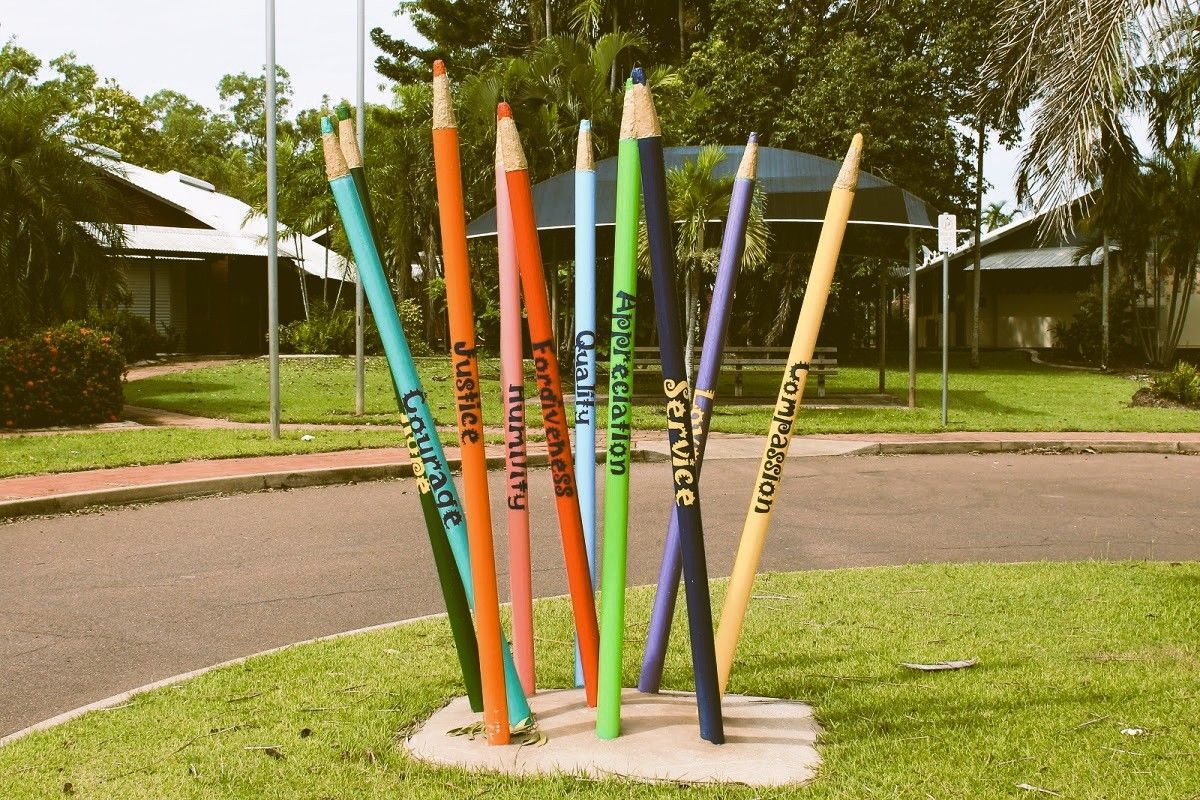Problem Solving
The task of Problem Solving is inherent in a Principal’s role. It happens every day and often the longer the problems exist the worse they become. A Principal can be fooled, as time goes on, that every type of problem has appeared at sometime on the daily plate and the solution can be readily tackled. I would fool myself with this notion but can state with confidence that this is unfounded and even after 30.5 years in the job I was still tackling original challenges.
It was one night well into my time as Principal that I learnt another lesson. Possibly I would have used this lesson but was not aware of it as an imperative. The shock of this experience made it so. AISNT had its Alice meeting and had concluded the day with a very enjoyable three course dinner held around properly laid tables in the bush. I was driving the 15 minutes back to Alice with the Vice Principal of Yipirinya when, just after reaching the bitumen, I was flagged down by a tall young man whom I recognised as a former pupil. I stopped and he, pointing to the bush, exclaimed there had been a motorbike accident. I asked him to phone an ambulance and went down off the road into the bush to the accident scene where I found the rider. At that moment the Coaster carrying the other AISNT members pulled up. Gail heard of the emergency as she went down the steps of the bus and her words were: “is there a second person?” That had not occurred to me but her words have remained in my head ever since, because there was. How amazingly perceptive of Gail!
From that day on I would look for another cause or another answer when solving a problem, even if I thought the solution was obvious. The question always had to be asked, was there another cause, another result, another factor and surprisingly there often was.
This notion leads into the question of “has everything being considered “when planning something. It was Easter and the Charles was in flood. Those of us at St Philip’s during Easter were marooned on the north bank of the Charles. Our teenage children were isolated on the town side and needed “stuff” from home. Chris Leesong my deputy grabbed his favourite rope with the intention of throwing it across the river and then setting up a flying fox to get “stuff” across to our kids. The end of the rope was firmly held by a second person as he set out to heave the rope over. He was a tall, strong man and the throw sent the rope flying through the air. None of us thought it was necessary to tie the rope off, it slipped out of the holder’s hands and disappeared into the grey flood waters. Tying it off did not seem necessary! When planning or solving a problem a Principal has to be sure that the rope is indeed tied off.
Years ago I was down at the beach with my family. They were little kids, and being an Outdoor Ed teacher I was often giving them the experience of abseiling by putting them in a harness and letting them down the side of a big rock. They loved it - safe adventure! They had all abseiled down this five meter cliff and were sitting on the sand watching me. I got into the harness, tied the rope to a protruding rock which seemed well set into the ground and went over the cliff. Suddenly the abseil rope became very light and I plummeted the remaining four meters to the ground and, oh horrors, the rather large but not fail safe rock landed beside me! It hadn’t been deeply imbedded in the ground.
I’m not sure whether my kids thought I was a hero or an idiot - but I knew which one it really was. I had broken the cardinal rule of abseiling which was to always tie off in three places. I ignored the rule, rushed it, thinking “she’ll be right” and she wasn’t!
In problem solving the words of the great creative educator Kurt Hahn always remain at the forefront of my head: “are you sure?” This can be applied in many ways to problem solving. Is there another reason? Is there another cause? Is there another result? Have all the rules been followed? What could have been forgotten? What should be considered that is not obvious? Who will this affect? And I’m sure other questions can be thoughtfully crafted.
Chris Tudor
AISNT Historian & Principal Liaison



